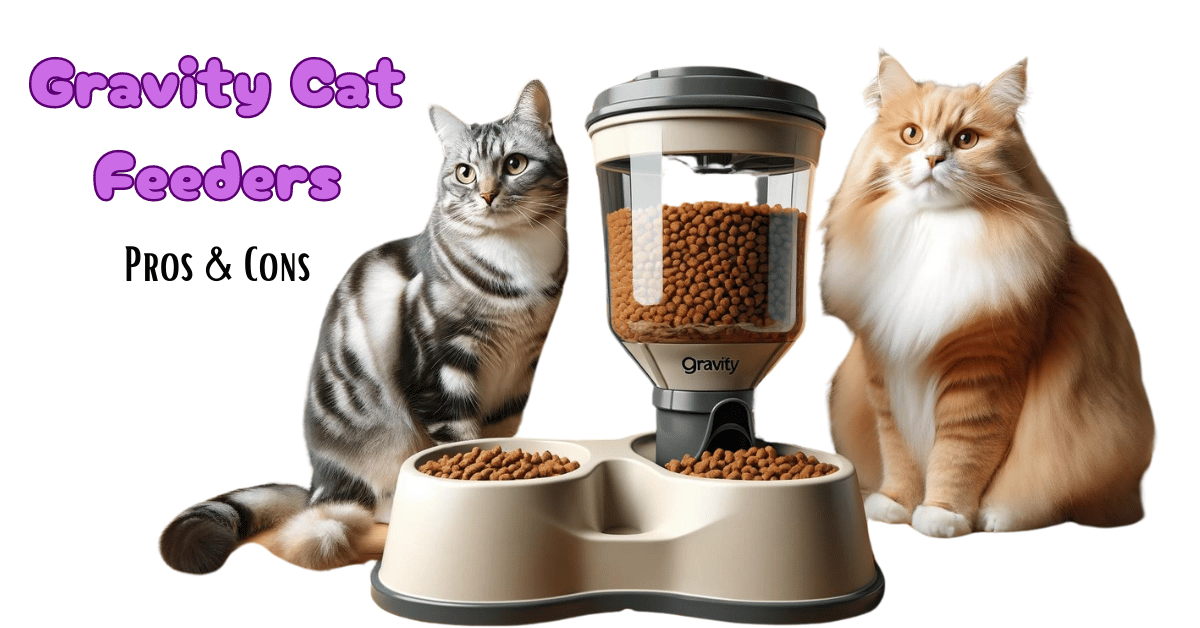This post contains affiliate links and I will be compensated if you make a purchase after clicking on my links.
Gravity Cat Feeders: Simplifying Pet Care
Automatic cat feeders stand as a beacon of convenience for cat owners juggling the demands of modern life. Among these innovations, gravity cat feeders offer a straightforward solution, ensuring that our furry companions have constant access to food, even in our absence.
This post delves into the world of gravity cat feeders, uncovering the pros, cons, and everything in between to provide a comprehensive overview for those considering this feeding solution.
What Are Gravity Cat Feeders?
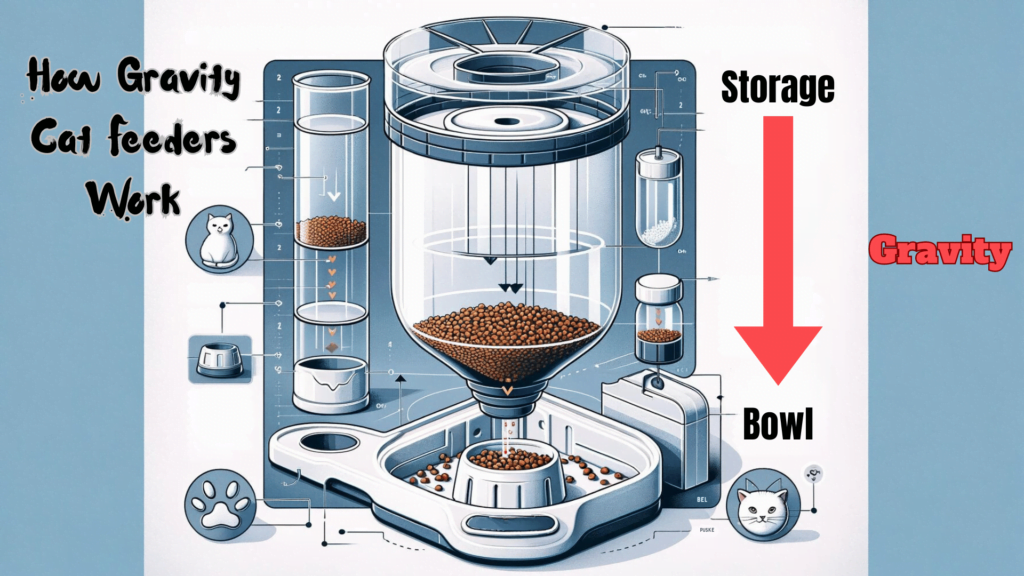
At its core, a gravity cat feeder is elegantly simple. It consists of a food reservoir attached to a bowl. As your cat eats, gravity pulls more food down to replenish the bowl, ensuring a steady supply. This design eliminates the need for electrical components, making it a low-tech solution in an increasingly high-tech world.
The genesis of gravity feeders traces back to basic needs — the necessity to feed pets in a consistent, reliable manner. Over time, these feeders have evolved from rudimentary designs to more sophisticated models that offer better control over food flow and accommodate various types of cat food.
Typically, a gravity cat feeder comprises two main parts: the storage container and the feeding bowl. The container, usually transparent or semi-transparent, holds the bulk of the food, allowing for easy monitoring of food levels. At the base, a specially designed opening allows food to fall into the attached bowl as needed, powered solely by gravity.
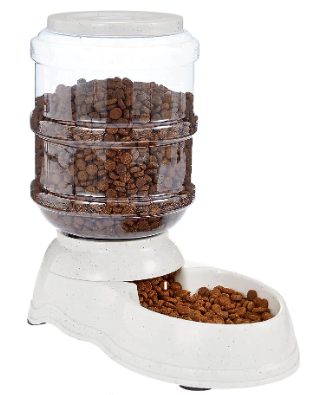
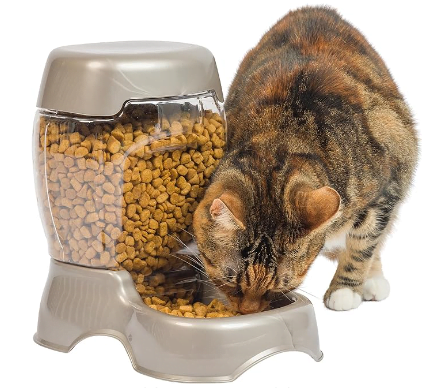
Pros and Cons of Gravity Cat Feeders at a Glance
| Pros | Cons |
|---|---|
| ✅ Simplicity and Ease of Use | ❌ Overeating Risk |
| ✅ Reliability | ❌ Limited to Dry Food |
| ✅ Cost-Effectiveness | ❌ Lack of Portion Control |
| ✅ Low Maintenance | ❌ Bulkiness and Aesthetics |
| ✅ Suitable for Indoors and Outdoors | ❌ Not Suitable for Cats with Dietary Restrictions |
| ✅ Ideal for Multi-Cat Households | ❌ Should Not Replace Human Interaction |
Pros of Gravity Cat Feeders
1. Simplicity and Ease of Use
Gravity cat feeders epitomize the “set it and forget it” philosophy. With no programming, electrical setup, or batteries required, these feeders stand out for their ease of use. Owners can rest easy knowing their cats will be fed without needing to navigate complex settings or worry about power outages.
2. Reliability
The beauty of gravity feeders lies in their simplicity, and with fewer moving parts, there’s less that can go wrong. This reliability is a boon for cat owners seeking a dependable feeding solution that won’t falter or require frequent troubleshooting.
3. Cost-Effectiveness
When it comes to feeding your feline friends, gravity feeders are a wallet-friendly option. Generally more affordable than their electronic counterparts, they provide a cost-effective solution for continuous feeding without compromising quality or convenience.
4. Low Maintenance
Gravity cat feeders require minimal maintenance. Without the need for regular programming adjustments or battery checks, these feeders make keeping your cat fed a hassle-free task. Cleaning is also less frequent, thanks to the straightforward design and durable materials often used in these feeders.
5. Suitable for Indoors and Outdoors
Their durability and simplicity make gravity feeders versatile enough for both indoor and outdoor use. Whether you have an indoor lap cat or an adventurous outdoor explorer, these feeders can adapt to various living situations, ensuring your cat’s belly is always full.
6. Ideal for Multi-Cat Households
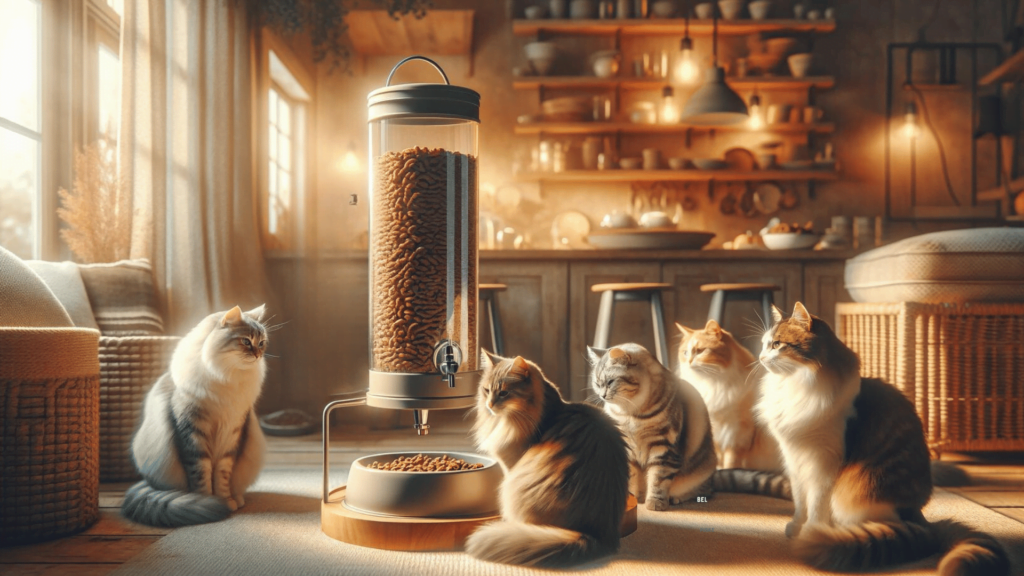
For homes graced by more than one feline, gravity feeders ensure that there’s enough food to go around. They’re a boon for busy pet parents who want to ensure all their cats have access to food throughout the day, minimizing competition and stress among pets.
Cons of Gravity Cat Feeders
1. Overeating Risk
The constant availability of food poses a risk for cats prone to overeating. With food always in the bowl, it can be challenging to monitor intake, potentially leading to obesity or other health issues.
2. Limited to Dry Food
Designed primarily for dry food, gravity feeders limit dietary options. This can be a significant drawback for cats requiring wet food for health reasons or for those who prefer a more varied diet.
3. Lack of Portion Control
One of the key limitations of gravity feeders is the lack of portion control. Without the ability to set specific meal sizes, it’s difficult to manage the dietary needs of cats that require precise portions for health reasons.
4. Bulkiness and Aesthetics
Some gravity feeders can be large and not particularly stylish, making them a less attractive option for pet owners concerned about the feeder blending seamlessly with their home decor.
5. Not Suitable for Cats with Dietary Restrictions
Cats with special dietary needs or those prone to eating too quickly may find gravity feeders challenging. The open access to food can complicate diet management for pets with health issues that require strict control over food intake.
6. Should Not Replace Human Interaction
While gravity feeders are convenient, they shouldn’t replace the important interaction that comes with traditional feeding times. Bonding with your cat during meals can foster a stronger relationship, something that automatic feeding alone cannot provide.
Pro Tip: For the guardians of chonky feline friends, we gently steer you away from gravity cat feeders. Since these gadgets champion the art of free feeding, they lack the finesse needed for scheduled meal times
Choosing the Right Gravity Cat Feeder: What to Consider
When it comes to selecting the perfect gravity cat feeder for your whiskered companion, there are several key factors to ponder. This decision isn’t just about filling a bowl; it’s about catering to your cat’s lifestyle, your home, and your own peace of mind.
Here’s what you need to mull over to ensure you’re picking a feeder that’s the cat’s meow:
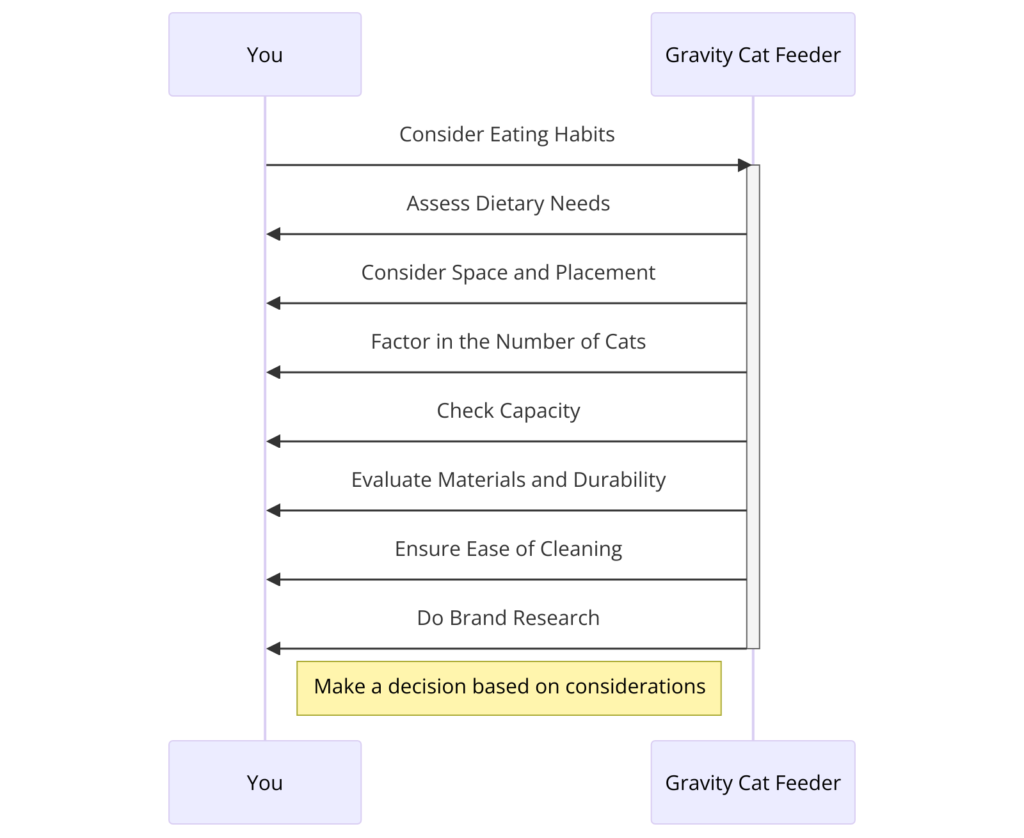
1. Reflect on Your Cat’s Eating Habits
Does your cat know when to say “enough,” or is it more a case of “if there’s food, I’ll eat it”? Self-regulation is a trait not all cats share, making the type of feeder you choose crucial for preventing overeating.
2. Assess Dietary Needs
Can your cat thrive on dry food alone, or do they require a mix of wet and dry, especially if they’re on a special diet for health purposes? Gravity feeders are predominantly designed for dry kibble, making them less suitable for pets with gourmet or specific dietary requirements due to health issues.
3. Consider Space and Placement
Your living space plays a big role in choosing a feeder. Think about where the feeder will live — is it going indoors, outdoors, or in a specific room? The feeder’s design and size should fit harmoniously within that space without becoming an obstacle course for you or your pets.
4. Factor in the Number of Cats
The more the merrier doesn’t always apply to feeding times. If you’re catering to a multi-cat household, consider how one feeder will serve all your feline friends. Will there be a lineup? Can they share nicely, or will it turn into a fur-flying fiasco?
5. Capacity is Key
Match the feeder’s capacity to your cat’s feeding needs and your schedule. A larger feeder means fewer refills, perfect for busy pet parents. However, ensure it’s not so large as to encourage waste or stale food.
6. Materials and Durability Matter
Opt for feeders made from durable materials like stainless steel or BPA-free plastic to ensure your cat’s feeding station is safe and long-lasting. These materials are also easier to clean, keeping mealtime sanitary.
7. Ease of Cleaning
Speaking of cleaning, choose a feeder that’s a breeze to disassemble and wash. Hygiene is paramount in preventing foodborne illnesses, so a feeder that makes cleaning less of a chore is a definite plus.
8. Do Your Brand Homework
Spend some time researching brands and reading reviews from fellow pet owners. Real-world insights can highlight a feeder’s strengths and weaknesses, guiding you toward the best choice for your feline family.
Tips for Using Gravity Cat Feeders Effectively
Opting for a gravity cat feeder brings a blend of convenience and autonomy to your cat’s dining routine. To maximize the benefits while minimizing any drawbacks, consider these effective usage tips:
Monitoring Food Intake
Keeping a watchful eye on your cat’s consumption is vital, especially with the always-open buffet that a gravity feeder offers. While it might be trickier to track exact amounts due to the free-feeding nature of these devices, you can still get a rough idea of how much your cat is eating. Regularly observe the level of food in the feeder and adjust the amount you replenish accordingly.
Regular Cleaning
Consistency in cleanliness cannot be overstressed. Even though gravity feeders are low maintenance, regular cleaning is essential to prevent food from going stale and to keep pesky invaders at bay. Make a habit of washing the feeder with soap and warm water during each refill to ensure your cat’s meals are always fresh and appealing.
Placement Tips
The feeder’s location can significantly impact your cat’s comfort and eating habits. Choose a quiet, low-traffic area where your cat can eat undisturbed. Ensure the spot is easily accessible to your cat but out of the way of busy household foot traffic to create a stress-free dining experience.
Alternatives to Gravity Cat Feeders
While gravity cat feeders offer simplicity and convenience, they might not be the perfect fit for every cat or cat owner, you might find one of these alternative feeding solutions more suitable:
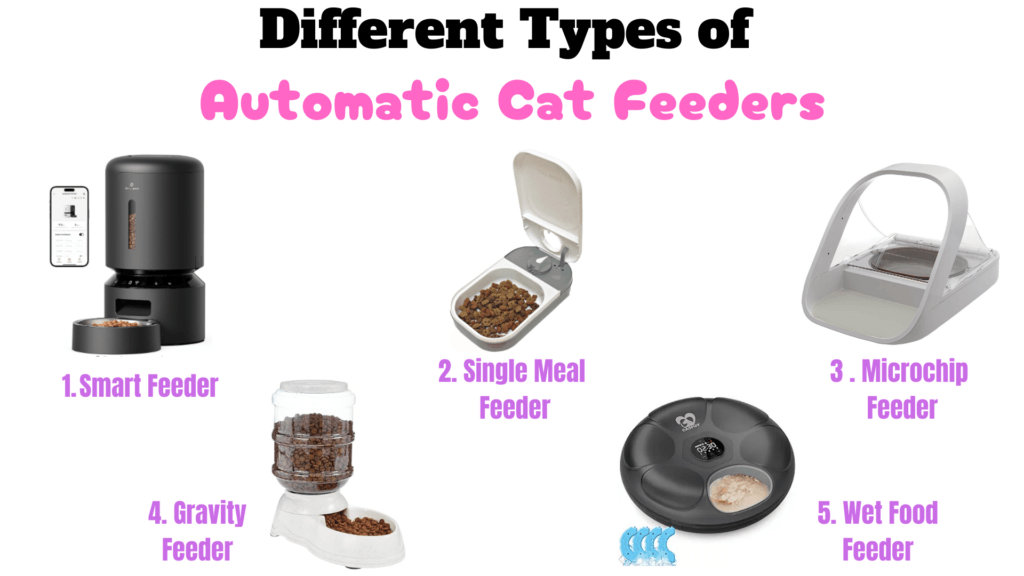
Cat Smart Feeder
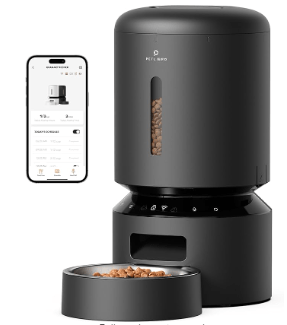
Smart Cat Feeders are suitable for the tech-savvy cat owner or pets on a strict feeding schedule, smart feeders provide the ultimate in convenience and control.
Cat Single Meal Feeder
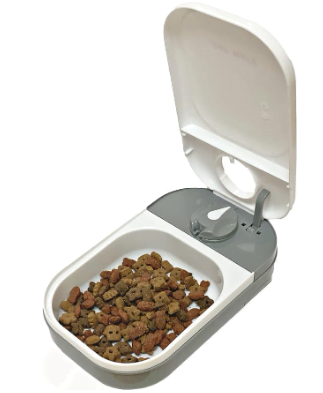
Single meal feeders are perfect for those occasional late nights or ensuring your cat gets a specific dose of medication with their meal.
Cat Wet Food Feeder
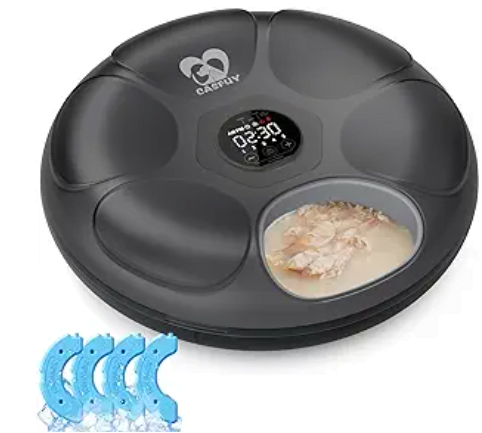
Wet Food feeders are suitable for cats that thrive on a wet food diet or require higher moisture content in their meals will benefit from a wet food feeder.
Cat Microchip Feeder
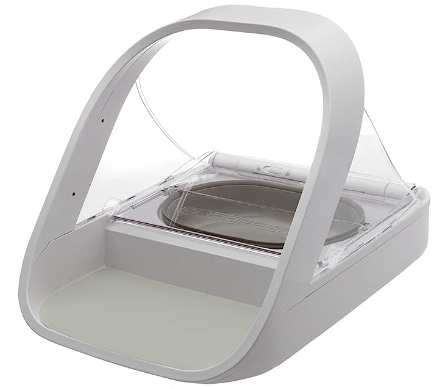
Microchip Feeders are suitable for multi-cat households or cats on special diets, microchip feeders ensure that only the right cat gets access to the food.
Concluding Insights on Gravity Cat Feeders
As we wrap up this guide on gravity cat feeders, it’s clear that these straightforward design and operation offer a no-fuss solution to keeping your feline friend fed, making them a worthy consideration for any cat owner.
On the journey of selecting and using a gravity cat feeder, let prudence and mindfulness be your guides. Weigh the pros and cons, consider the practical tips shared, and always keep your cat’s best interests at heart.
Meet Sean, a fintech whiz with a penchant for pet purrs and blockchain buzz. After a decade of fintech feats, Sean’s tech talents leaped from ledger lines to litter lines, driven by a passion for pets and a vision for a more connected pet care community. With three critter companions as co-pilots, Sean launched this blog to share a treasury of pet-friendly tech tips and tales.

